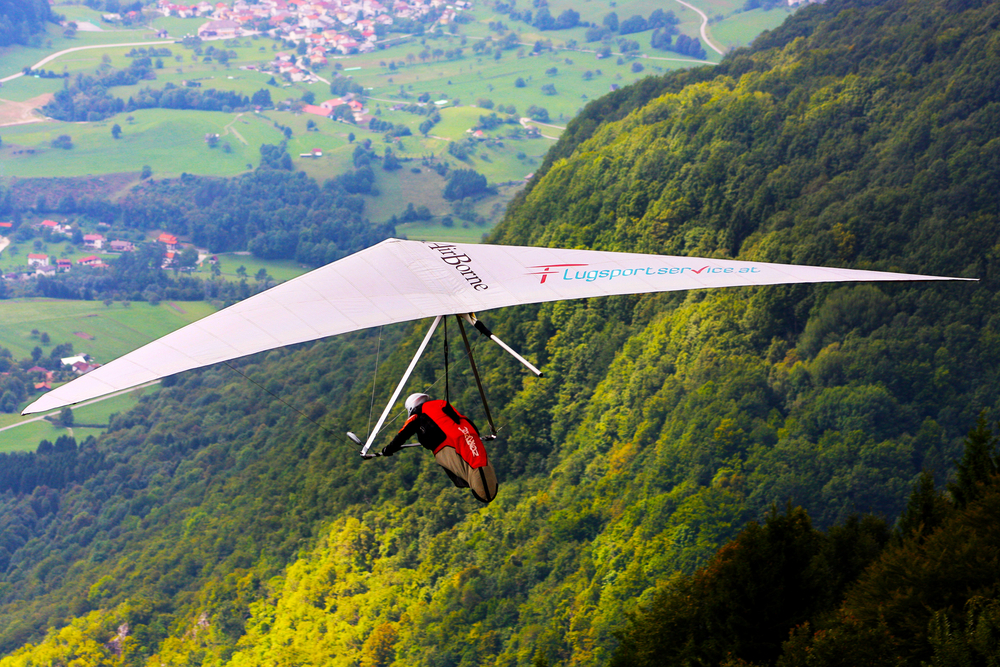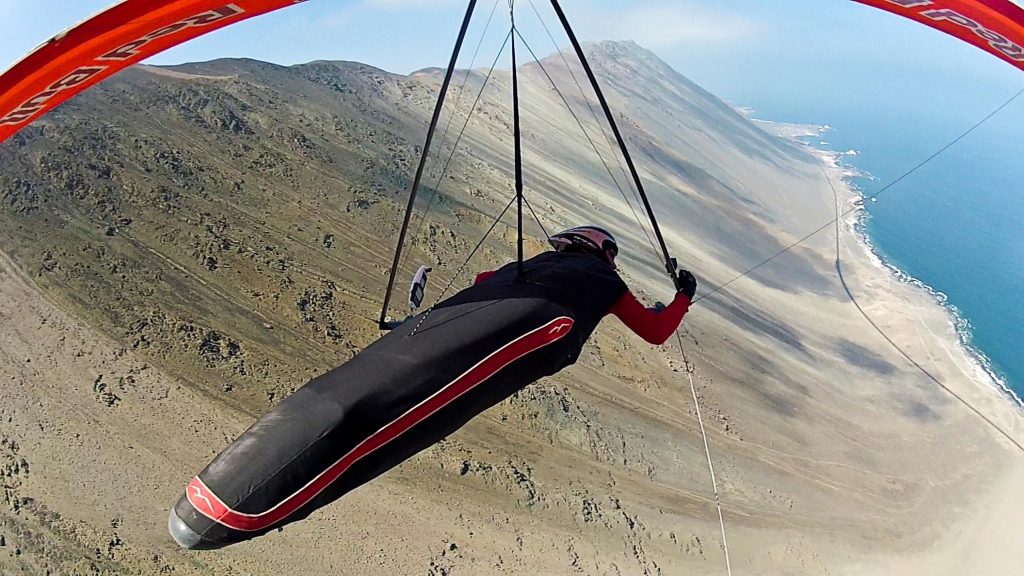About Hang Gliding


Hang gliding flight
Soaring flight and cross-country flying
Good gliding weather. Well formed cumulus clouds with darker bases suggest active thermals and light winds.
A glider in flight is continuously descending, so to achieve an extended flight, the pilot must seek air currents rising faster than the sink rate of the glider. Selecting the sources of rising air currents is the skill that has to be mastered if the pilot wants to achieve flying long distances, known as cross-country (XC). Rising air masses derive from the following sources:[17]ThermalsThe most commonly used source of lift is created by the Sun’s energy heating the ground which in turn heats the air above it. This warm air rises in columns known as thermals. Soaring pilots quickly become aware of land features which can generate thermals and their trigger points downwind, because thermals have a surface tension with the ground and roll until hitting a trigger point. When the thermal lifts, the first indicator are the swooping birds feeding on the insects being carried aloft, or dust devils or a change in wind direction as the air is pulled in below the thermal. As the thermal climbs, bigger soaring birds indicate the thermal. The thermal rises until it either forms into a cumulus cloud or hits an inversion layer, which is where the surrounding air is becoming warmer with height, and stops the thermal developing into a cloud. Also, nearly every glider contains an instrument known as a variometer (a very sensitive vertical speed indicator) which shows visually (and often audibly) the presence of lift and sink.

Having located a thermal, a glider pilot will circle within the area of rising air to gain height. In the case of a cloud street, thermals can line up with the wind, creating rows of thermals and sinking air. A pilot can use a cloud street to fly long straight-line distances by remaining in the row of rising air.Ridge liftRidge lift occurs when the wind encounters a mountain, cliff or hill. The air is pushed up the windward face of the mountain, creating lift. The area of lift extending from the ridge is called the lift band. Providing the air is rising faster than the gliders sink rate, gliders can soar and climb in the rising air by flying within the lift band and at right angle to the ridge. Ridge soaring is also known as slope soaring.Mountain wavesThe third main type of lift used by glider pilots is the lee waves that occur near mountains. The obstruction to the airflow can generate standing waves with alternating areas of lift and sink. The top of each wave peak is often marked by lenticular cloud formations.ConvergenceAnother form of lift results from the convergence of air masses, as with a sea-breeze front. More exotic forms of lift are the polar vortices which the Perlan Project hopes to use to soar to great altitudes.[18] A rare phenomenon known as Morning Glory has also been used by glider pilots in Australia

Stability and equilibrium
High performance flexible wing hang glider. 2006
Because hang gliders are most often used for recreational flying, a premium is placed on gentle behaviour especially at the stall and natural pitch stability. The wing loading must be very low in order to allow the pilot to run fast enough to get above stall speed. Unlike a traditional aircraft with an extended fuselage and empennage for maintaining stability, hang gliders rely on the natural stability of their flexible wings to return to equilibrium in yaw and pitch. Roll stability is generally set to be near neutral. In calm air, a properly designed wing will maintain balanced trimmed flight with little pilot input. The flex wing pilot is suspended beneath the wing by a strap attached to his harness. The pilot lies prone (sometimes supine) within a large, triangular, metal control frame. Controlled flight is achieved by the pilot pushing and pulling on this control frame thus shifting his weight fore or aft, and right or left in coordinated maneuvers.